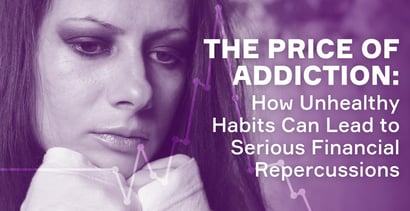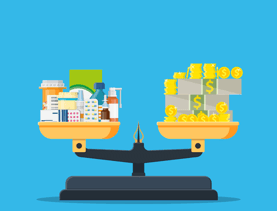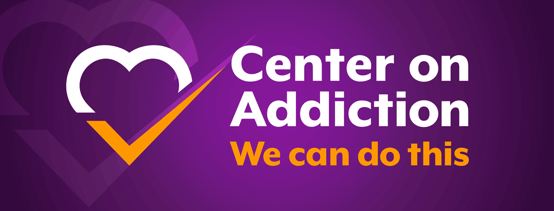

In a Nutshell: Addiction not only wreaks physical and mental havoc on an individual, but it can lead to dire financial consequences as well. We recently spoke with Linda Richter, Ph.D., who is the Director of Policy Research and Analysis for Center on Addiction about how unhealthy habits can have significant impacts on household budgets and the economy as a whole. She also discussed how family members can look for changes in behavior if they suspect a loved one is sliding into addiction. The center works to raise awareness in the pursuit of its mission to transform how our nation addresses addiction and to support the whole family as it addresses every aspect of addiction, from prevention to recovery.
Addiction is a much broader and more complex topic than movies and television in popular culture portray. Often not shown are the financial repercussions as a result of addiction that ripple through a person’s life and the lives of their family members.
 Vice Magazine spoke with a number of people who have struggled with addiction, and the amount of money they have spent on their substances of choice are astounding. One former crack user estimates that he spent at least $150,000 on his habit. An opioid user said he spent about $200,000 on pills, not counting the cocaine, LSD, and alcohol he was also consuming at the time.
Vice Magazine spoke with a number of people who have struggled with addiction, and the amount of money they have spent on their substances of choice are astounding. One former crack user estimates that he spent at least $150,000 on his habit. An opioid user said he spent about $200,000 on pills, not counting the cocaine, LSD, and alcohol he was also consuming at the time.
These types of addictions make it nearly impossible to live a life that is not completely centered around the habit, which can tear families apart or have other long-lasting consequences for an addict’s family members.
To learn more about the financial consequences of addiction, how to spot warning signs, and how to address the issue among loved ones, we recently spoke with Linda Richter, Ph.D., who is the Director of Policy Research and Analysis for Center on Addiction.
The organization seeks to transform how the U.S. addresses addiction, and it is the only national nonprofit working to support the whole family as they address all aspects of addiction.
Addiction Can Result in Negative Economic Impacts
“The National Institute on Drug Abuse — part of the U.S. National Institutes of Health — estimates that nicotine, alcohol, and other drug use costs the U.S. more than $740 billion annually in costs related to crime, lost work productivity, and health care,” Richter said.
State governments spend on average 16% of their budgets on “risky use” and addiction-related costs, according to Center on Addiction.
The actual cost of addiction to an individual is difficult to calculate, she said, but it is highly significant. Addiction exacts a substantial economic toll on the individual and the individual’s family, in terms of costs related to acquiring the addictive substances or money spent on gambling.
Although nearly endless factors make it virtually impossible to approximate how much a particular addiction may cost in dollars, Vice provided an estimate for several different areas based on its own research.
A cocaine habit can cost users anywhere from $450 to $1,200 a day; an opioid addiction may cost an individual $75 a day; and crack, at $60 per gram, may cost up to $225 a day.
But even addictions that can present more subtly, such as alcoholism, can be devastating to a budget. Vice Magazine estimates that an alcoholic spends about $50 a day on the habit. That’s $1,500 a month or $18,250 per year.
The economic toll also extends to the individual and family members’ ability to work and their addiction-related health expenditures, she said.
Richter pointed out that, as evidenced by gambling habits, addiction is not always strictly about acquiring and using an illicit substance.
“Gambling addiction is formally considered a diagnosable addiction, according to the ‘Diagnostic and Statistical Manual of Mental Disorders,’” she said. “And although shopping addiction shares many features of other clinically-recognized forms of addiction, there is not yet enough research on it to warrant its inclusion in this classification system.”
Although compulsive shopping hasn’t made it into the DSM, it is recognized by some as a behavior that can wreak economic havoc on a person and their family.
Identifying and Addressing Addiction with Loved Ones
Richter said that, historically, addiction has been viewed as a set of distinct but loosely related conditions, and prevention, treatment, and policy approaches have reflected this fragmented practice.
“Accumulating evidence, however, attests to the similarities in the causes, defining characteristics, and consequences of nicotine, alcohol, and other drug addiction, and, more recently, certain other compulsive behaviors such as gambling,” she said.
The different types of addiction share similar risk factors, such as a family history of addiction or mental health problems, and similar symptom expressions, including cravings, disruption of normal life functioning, and withdrawal symptoms, she said. They also share comparable responsiveness to treatment, such as the effectiveness of cognitive behavioral therapy or a tendency to relapse several times before attaining a sustained recovery.

Center on Addiction’s mission is to support the whole family in addressing every aspect of addiction, from prevention to recovery.
“They also overlap in terms of their consequences,” Richter said. “Addiction can disrupt relationships, interfere with school and work performance, and lead to numerous health problems that are dangerous and costly.”
Richter offered a few warning signs to look out for, for those who may be concerned that a family member is slipping into addiction.
Behavioral changes, such as changes in the nature of personal relationships, erratic sleep patterns, or becoming more secretive, can be indications of addiction, she said. Shifts in mood and personality, like signs of depression or emotional instability, may further indicate when a person is struggling with substance abuse or addictive behaviors.
Other indicators may include hygiene and appearance problems, health issues, and changes in school or work performance, she said.
“The main overarching recommendation, however, is to act fast and seek professional help rather than waiting until a suspected problem progresses to a dangerous point,” Richter said. “Addiction is a treatable disease, and a person with addiction should be under the care of a qualified health professional.”
How the Center is Raising Awareness and Fighting Addiction
“The mission of Center on Addiction is to transform how our nation addresses addiction,” Richter said. “We are committed to supporting the whole family as they address every aspect of substance use and addiction, from prevention to recovery.”
The organization empowers parents and caregivers with support and guidance using the latest science-based information through its parent support network and helpline, she said.
“We research and advance effective prevention and treatment strategies. We advocate for lifesaving policy changes. Finally, we aspire to change the national conversation around addiction so that no one will feel alone or ashamed to seek help, and everyone has access to the care they need and deserve.” — Linda Richter, Director of Policy Research and Analysis for Center on Addiction
In January, the Partnership for Drug-Free Kids merged with Center on Addiction. The two organizations are now officially housed under the Center on Addiction name, but the Partnership for Drug-Free Kids still maintains a web presence and makes educational materials available to readers.
“Partnership for Drug-Free Kids offers many useful resources to individuals and families concerned about addiction, including warning signs to look out for,” Richter said. “We also offer many resources to help individuals and families address addiction.”
The Center on Addiction website also contains a wealth of tools and resources geared toward policymakers and health care professionals. The nonprofit also regularly conducts and publishes research on addiction-related topics in an effort to raise awareness and promote best practices around addressing addiction.
Unfortunately, addiction continues to damage individuals and families in many ways, including financially. Thankfully, due in part to research conducted by organizations like Center on Addiction, the disease of addiction is becoming understood more clearly than ever before.
That means that, even when all seems lost, there is more hope than ever before for recovery and a life free from addiction.
Advertiser Disclosure
BadCredit.org is a free online resource that offers valuable content and comparison services to users. To keep this resource 100% free for users, we receive advertising compensation from the financial products listed on this page. Along with key review factors, this compensation may impact how and where products appear on the page (including, for example, the order in which they appear). BadCredit.org does not include listings for all financial products.
Our Editorial Review Policy
Our site is committed to publishing independent, accurate content guided by strict editorial guidelines. Before articles and reviews are published on our site, they undergo a thorough review process performed by a team of independent editors and subject-matter experts to ensure the content’s accuracy, timeliness, and impartiality. Our editorial team is separate and independent of our site’s advertisers, and the opinions they express on our site are their own. To read more about our team members and their editorial backgrounds, please visit our site’s About page.

